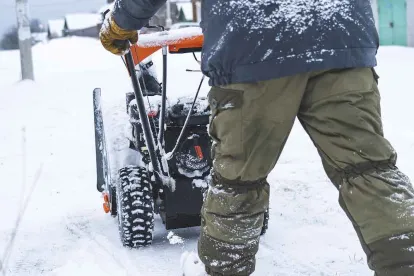Background
Over Presidents’ Day weekend 2021, an unprecedented cold weather event hit the Midwest and South central United States. The storm led to major disruptions to infrastructure throughout the region, including icy road conditions, frozen pipes, and an estimated 3 million Texans still without power.[1] This is the result of a confluence of circumstances, including but not limited to frigid temperatures freezing generation and transmission equipment, shortages in natural gas supply and energy demand greatly exceeding supply, and Texas’ practice of operating separately from the rest of the bulk electric system.
The Electric Reliability Council of Texas, Inc. (“ERCOT”), Southwest Power Pool, Inc. (“SPP”), and Midcontinent Independent System Operator, Inc. (“MISO”) are implementing rolling blackouts throughout the affected regions in an attempt to ensure no area is without power for too long. Nonetheless, the blackouts in some areas have endured for hours—even days in some parts of Texas—as temperatures remain below freezing.
Regulators’ Responses and Promises to Investigate
Responding to the continuing exigent conditions, Texas House Speaker Dade Phelan called for a hearing and Texas Governor Greg Abbott declared ERCOT reform an emergency item for the 2021 Texas legislative session. Governor Abbott also mandated that in-state natural gas be offered for sale to Texas generators before being shipped elsewhere.[2]
The Public Utility Commission of Texas (“PUCT”) also took action by its February 16, 2021 order directing ERCOT to raise energy prices to reflect scarcity.[3] The PUCT order came after ERCOT informed the PUCT that energy prices across the system, which are capped at $9,000, were clearing at prices as low as $1,200 despite the state declaring its highest level energy emergency and shedding firm load to address demand increasingly exceeding supply. The PUCT order noted that this outcome is “inconsistent with the fundamental design of the ERCOT market,” and “[i]f customer load is being shed, scarcity is at its maximum, and the market price for the energy needed to serve that load should also be at its highest.” Exercising its “complete authority” over ERCOT pursuant to Texas Utilities Code § 39.151(d), the PUCT ordered ERCOT to ensure that scarcity and firm load being shed during the state of emergency are accounted for in ERCOT’s scarcity pricing signals.
In the February 16, 2021 order, the PUCT further ordered ERCOT to suspend its use of the low system-wide offer cap (“LCAP”), which is designed to protect consumers from high prices where the generator revenue threshold has been reached. Because application of the LCAP would hinge on the current and exceptionally high price of natural gas, the PUCT found that the LCAP would achieve the opposite of its intended result by exposing consumers to substantially high prices. Thus, the PUCT ordered ERCOT to suspend use of the LCAP until after PUCT’s next open meeting.
Federal regulators also weighed in preliminarily as power outages continued in Texas and surrounding regions. Federal Energy Regulatory Commission (“FERC”) Chairman Richard Glick issued a statement on Monday providing that FERC is in contact with ERCOT, SPP, and MISO, and “is closely monitoring the extreme weather conditions occurring in much of the country and the impact they are having on electric reliability.” Chairman Glick went on to explain that, “[i]n the days ahead, [FERC] will be examining the root causes of these reliability events . . .” Although FERC’s jurisdiction over wholesale power sales and transmission does not reach ERCOT markets, its reliability jurisdiction does apply in ERCOT. After the 2011 cold weather event, referenced below, FERC initiated a broad inquiry that resulted in a joint report with the North American Electric Reliability Corporation (“NERC”).
On Tuesday, February 16, 2021, FERC and NERC announced their intentions to proceed with a joint inquiry. Both agencies released statements providing that they will “open a joint inquiry into the operations of the bulk-power system during the extreme winter weather conditions currently being experienced by the Midwest and South central states.” The agencies stated that the inquiry will begin in “the days ahead” and will consist of a collaboration between federal agencies, states, and regional utilities to identify problems with the bulk-power system and craft solutions to those problems.
2011 Cold Weather Event and Investigation
This is not the first time FERC and NERC have investigated reliability problems in the South and Midwest and the earlier inquiry and resulting report provide some early guidance now on what may unfold. In January-February 2011, extreme cold in the region led to severely reduced supply and unprecedented demand (hereinafter, “2011 cold weather event”). At that time, despite seemingly adequate reserves, ERCOT and other entities experienced widespread outages caused by loss of capacity attributed primarily to trips, derates, and failures to start. Across the ERCOT region, 67% of generation facility failures were attributable directly to the cold, which caused myriad problems including frozen equipment, water lines, and valves. At the nadir of the 2011 cold weather event, around one-third of ERCOT’s generation fleet was unavailable.
In response, FERC and NERC conducted an investigation into the causes of the disruptions and the steps that could be taken to improve reliability during future winter weather events. The wide-ranging investigation report (“FERC and NERC report,” or “report”) focused on the interdependence of electric and natural gas systems, winterization procedures, and several other factors that played a part in the crisis.[4] The report and a compilation of documents related to the 2011 cold weather event can be found at NERC’s webpage devoted to the event. The report concluded that many of the generation failures that led to outages in the region resulted from equipment not being designed or maintained to function during sustained freezing weather. A smaller number of generators also suffered from fuel supply problems.
The FERC and NERC report provided recommendations to prevent reliability issues during future winter events. The report’s 26 recommendations for the electric industry focused on five areas: Planning and Reserves, Coordination with Generator Owners/Operators, Winterization, Communications, and Load Shedding. The key recommendations in each area are identified here.
-
Planning and Reserves: The Planning and Reserves recommendations focused on the ability to identify what generation capacity would actually be available during a cold weather event. The report emphasized that generation facility sensitivity to cold weather should be determined and taken into account at the planning stage. The report emphasized the need for increasing cold weather responsive reserves, implementing more flexibility in approving planned outages, and ramping up mandatory operational pre-warming.
-
Coordination with Generator Owners/Operators: The report’s Coordination recommendations recommended periodic demonstrations of fuel switching ability and adverse condition testing of black start generation units. These recommendations also focused on identifying the actual output capacity and ambient temperature design operating limits of generators.
-
Winterization: The bulk of the report’s recommendations concerned Winterization. The overarching goal of these recommendations sought to ensure that generation facilities would not fail in cold weather, when they are most critical. FERC and NERC proposed that new generation facilities should be capable of operating at the lowest historically recorded ambient temperature in the nearest city. For older generation facilities, the recommendations suggested assessing cold weather capability with specificity. For all units, the report emphasized the importance of regular maintenance and testing of key systems like heat tracing equipment, insulation, and wind breaks. Where these systems were not adequate, the report recommended investments to update them hem. Among other things, FERC and NERC proposed that each generation facility or generation operator implement a winterization plan.
-
Communications: The report’s Communications recommendations highlighted the importance of keeping transmission owner/operators, distribution providers, and other market participants connected in a crisis. Emergency communications protocols and increased information sharing were the report’s key points of emphasis.
-
Load Shedding: The report included two recommendations for Load Shedding. First, transmission operators and distribution providers should conduct a critical load review for gas facilities to determine the level of protection they should be afforded in the event of stress or load shedding. Second, transmission operators should train operators in proper load shedding procedures and conduct periodic drills to maintain their load shedding skills.
Following issuance of the joint FERC and NERC report on the 2011 cold weather event, FERC requested information on the report’s recommendations.[5] Various entities submitted responses, including Texas Reliability Entity, Inc. (“TRE”). TRE’s December 2011 response identified changes to procedures based on lessons learned from the 2011 cold weather event.[6] It also summarized the results of a survey conducted later in 2011, in November 2011, on winter preparedness of registered entities, which illustrated how they are implementing the recommendations of the joint FERC and NERC report.
With respect to ERCOT’s role as planning authority and balancing authority, the response identified certain activities, including augmentation of ERCOT’s winter assessment; initiation of possible changes to the ERCOT protocols to address the recommendation regarding reserve and capacity procedures or requirements; and requiring affidavits from generation entities confirming completion of weatherization.
In addition to summarizing the responses of registered entities to the survey, TRE’s December 2011 cover letter to FERC on ERCOT’s efforts in 2011 since the 2011 cold weather event highlighted ERCOT’s efforts and actions to respond to certain of the recommendations, including approval of a new black start requirement and changes to enhance communications during emergency events. TRE’s response also identified five general vulnerabilities for extreme cold weather in the ERCOT region and mitigation measures to reduce each vulnerability. The vulnerabilities were primarily related to the failure of generators to prepare for cold weather events and the statistical rarity of cold weather events in Texas. The response also noted the vulnerability of wind generator designs in the face of cold weather and recommended examining wind generators and if necessary, removing them from cold weather planning.
Inquiries from FERC continued into 2015 in an attempt to identify what went wrong in 2011, gather additional information, and delineate the SPP, MISO and ERCOT region’s respective plans and efforts to ensure reliability. ERCOT’s Independent Market Monitor also investigated the 2011 cold weather event and published its resulting report, a step that will likely be completed once again in response to the ongoing cold weather event and resulting blackouts.
[1] Eric Levenson & Madeline Holcombe, Millions Without Power in Texas as Cold Snap Throttles Energy Supply and Electric Grid, CNN (Feb. 17, 2021),.
[2] Letter from Governor Greg Abbott to Christi Craddick, Chairman, Railroad Commission of Texas (Feb. 17, 2021), .
[3] Public Utility Commission of Texas, PUC Project No. 51617 (Feb. 16, 2021).
[4] FERC and NERC, Staff Report on Outages and Curtailments During the Southwest Cold Weather Event of February 1-5, 2011: Causes and Recommendations (August 2011),
[5] Follow-up Actions in Response to August 16, 2011 Joint Report, Docket No. AD11-9-000 (Nov. 9, 2011) (delegated letter order).
[6] Response to November 9, 2011 Request for Follow-up Actions in Response to August 16, 2011 Joint Report, Texas Reliability Entity, Inc., Docket No. AS11-9-000 (Dec. 7, 2011).






 />i
/>i
